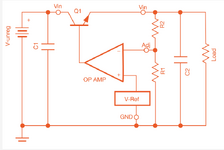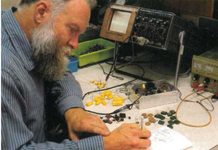engr_joni_ee
Advanced Member level 3
I am trying to understand the functionality of linear regulators. I have attached the fundamental circuit of linear regulator.
Can someone please explain how does the circuit work ?
I am also wondering where the V-Ref comes from ? Consider two following two cases.
Vin = 5.0 V
Vout = 4.0 V
Iout = 1 A
Vin = 3.3 V
Vout = 2.5 V
Iout = 1 A
Would V-Ref be the same for both cases or not ?
Can someone please explain how does the circuit work ?
I am also wondering where the V-Ref comes from ? Consider two following two cases.
Vin = 5.0 V
Vout = 4.0 V
Iout = 1 A
Vin = 3.3 V
Vout = 2.5 V
Iout = 1 A
Would V-Ref be the same for both cases or not ?



